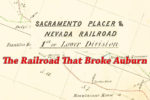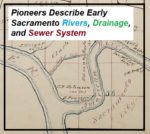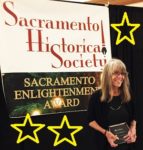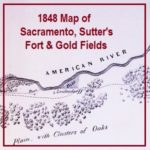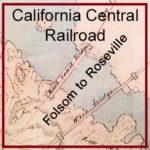By today’s standards, it seems absolutely crazy that anyone would invest money in property or infrastructure when there was no clear title to the land and the State of California continually threatened to strip Folsom of his ownership of the Leidesdorff estate. But this was the state of California in the 1850s. Even before the untimely death of Folsom, he and other men were pushing forward with their development plans in Sacramento County. Folsom had been working with the Sacramento Valley Railroad to run a line from Sacramento to Negro Bar on the south side of the American River over the Leidesdorff land grant.



